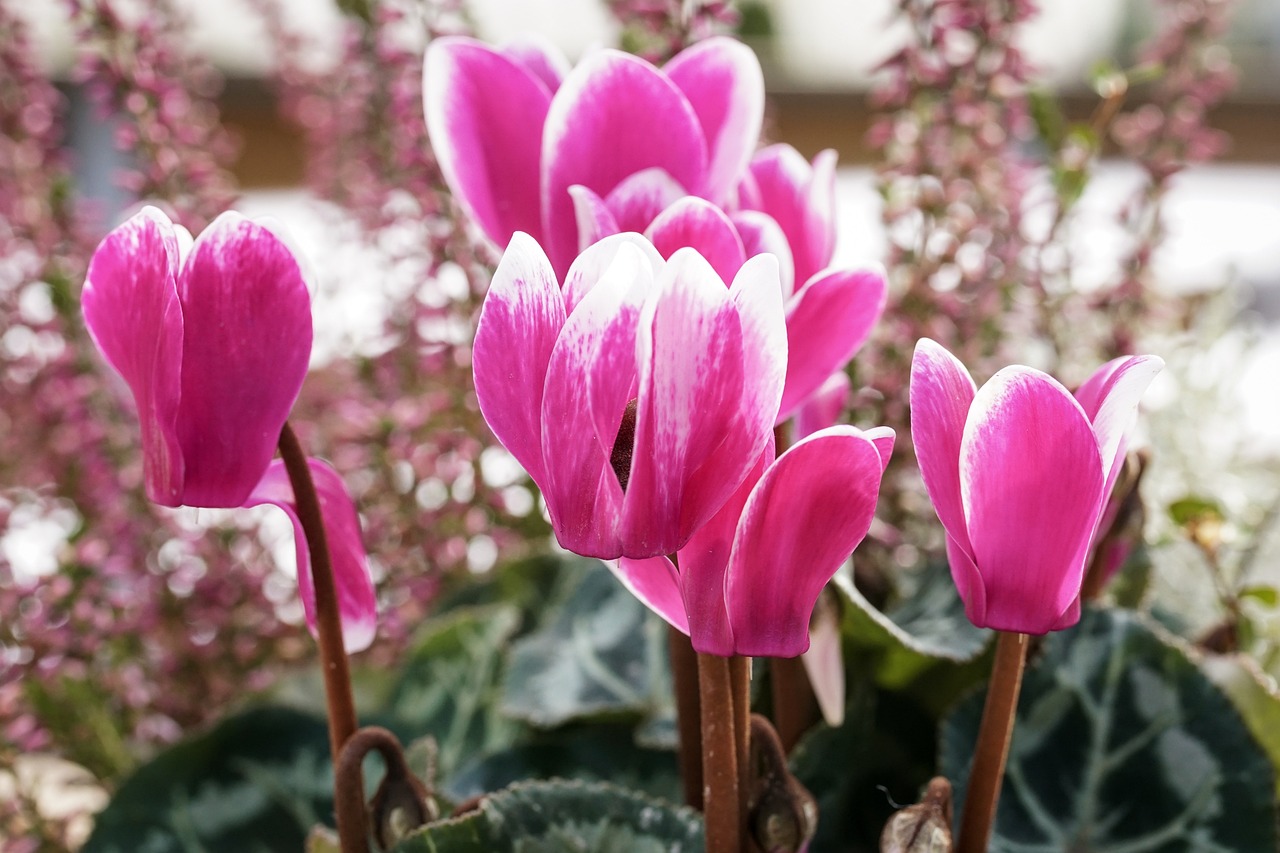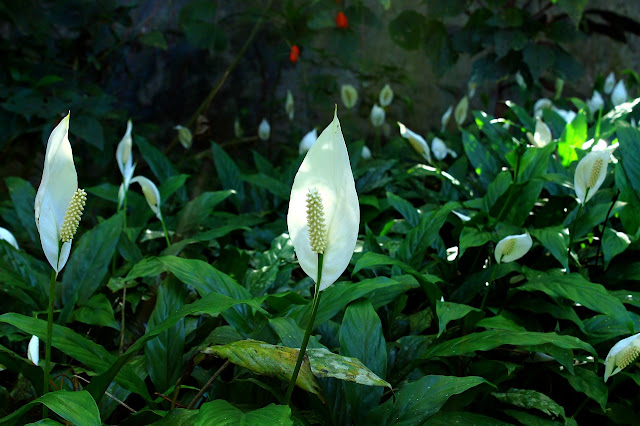From Frost to Flourish: The Best Plants to Grow in December
Why December is the Perfect Month to Start Gardening
Many people associate gardening with the spring and summer months, when the weather is warm and the days are long. However, December is actually a great time to start gardening. The cooler temperatures and increased rainfall make it easier to establish new plants and keep them healthy. Plus, gardening in December can help you beat the winter blues and enjoy the benefits of being outside.
Gardening in December may seem unconventional, but it can be a great way to enjoy the benefits of gardening all year round. Whether you're planting winter-flowering plants, bulbs for spring blooms, or vegetables for your table, there are many ways to get involved in gardening this December.
Winter-Flowering Plants: Add Some Colour to Your Garden
Just because it's winter doesn't mean your garden has to be dull and lifeless. There are many winter-flowering plants that can add some colour and interest to your garden. Hellebores, also known as Christmas roses, are a popular choice for winter blooms. They come in a variety of colours, from white and pink to deep purple, and can brighten up any garden.
Winter jasmine is another great option for adding colour to your garden in December. This plant produces bright yellow flowers that bloom throughout the winter months. It's a hardy plant that can tolerate cold temperatures and is easy to care for.
Camellias are also a popular choice for winter blooms. These evergreen shrubs produce large, showy flowers in a range of colours, including white, pink, and red. They can be grown in containers or planted directly in the ground, and they thrive in partial shade.
Bulbs to Plant in December: Get Ready for Spring Blooms
December is the perfect time to plant bulbs that will bloom in the spring. Tulips, daffodils, and hyacinths are all popular choices for spring blooms. Planting bulbs now will give them time to establish roots before the ground freezes, and they'll be ready to bloom when the weather warms up.
Tulips come in a wide range of colours and varieties, from single blooms to double blooms, and can add a burst of colour to your garden in the spring. Daffodils are another popular choice for spring blooms. They come in a variety of shapes and sizes and are known for their bright yellow flowers. Hyacinths are known for their fragrant blooms and come in a range of colours, including pink, purple, and white.
When planting bulbs in December, it's important to choose a location that receives full sun or partial shade. Dig a hole that is two to three times the depth of the bulb, place the bulb in the hole with the pointed end facing up, and cover with soil. Water thoroughly after planting and keep the soil moist throughout the winter months.
Evergreens: Keep Your Garden Looking Lush
Evergreens are a great addition to any garden, especially in the winter when other plants have died back. They provide year-round interest and can help keep your garden looking lush and green even in the coldest months.
There are many different types of evergreens to choose from, including pine trees, spruce trees, and holly bushes. These plants are known for their ability to retain their leaves or needles throughout the year, providing colour and texture to your garden.
Pine trees are a popular choice for evergreens. They come in a variety of sizes and shapes, from small shrubs to towering trees. Spruce trees are another great option for evergreens. They have needle-like leaves that can range in colour from green to blue to silver.
Holly bushes are known for their glossy green leaves and bright red berries. They can be grown as shrubs or trained into small trees. Holly bushes are also a great choice for attracting birds to your garden, as the berries provide a source of food during the winter months.
Vegetables to Grow in December: Fresh Produce for Your Table
Believe it or not, there are many vegetables that can be grown in December. Kale, spinach, and carrots are just a few examples of vegetables that can thrive in the cooler temperatures of winter.
Kale is a leafy green vegetable that is packed with nutrients. It can be grown in containers or directly in the ground and is known for its ability to withstand cold temperatures. Spinach is another great option for winter gardening. It can be grown from seeds or transplants and is known for its tender leaves and mild flavour.
Carrots are a root vegetable that can be grown throughout the winter months. They can be sown directly in the ground or in containers and are known for their sweet flavour and crunchy texture. Carrots come in a variety of colours, including orange, purple, and yellow.
Growing your own vegetables is a great way to ensure you have fresh produce for your table all year round. Plus, it's a fun and rewarding activity that can help you connect with nature and reduce your carbon footprint.
Herbs to Plant in December: Add Flavour to Your Meals
December is a great time to plant herbs like rosemary, thyme, and sage. These herbs can add flavour and aroma to your meals, and they're easy to grow in pots or in the ground.
Rosemary is a woody herb that is known for its strong flavour and fragrance. It can be used to season meats, vegetables, and soups, and it's also a popular choice for making infused oils and vinegars. Thyme is another versatile herb that can be used in a variety of dishes. It pairs well with poultry, fish, and vegetables, and it's also a key ingredient in many Mediterranean and Middle Eastern cuisines.
Sage is a herb that is known for its earthy flavour and aroma. It can be used to season meats, stuffing, and sauces, and it's also a popular choice for making herbal teas. Sage is a hardy herb that can tolerate cold temperatures and is easy to care for.
When planting herbs in December, it's important to choose a location that receives full sun or partial shade. Herbs prefer well-drained soil, so it's a good idea to amend the soil with compost or organic matter before planting. Water regularly and harvest the herbs as needed to encourage new growth.
Trees to Plant in December: Start a New Tradition
Planting a tree in December can be a great way to start a new tradition and give back to the environment. Trees provide many benefits, such as shade, oxygen, and habitat for wildlife.
When choosing a tree to plant in December, it's important to consider the climate and soil conditions in your area. Native trees are often a good choice, as they are adapted to the local environment and require less maintenance.
Some popular choices for December tree planting include oak trees, maple trees, and fruit trees. Oak trees are known for their strength and longevity and can provide shade and habitat for wildlife. Maple trees are known for their vibrant fall foliage and can add colour and interest to your garden. Fruit trees, such as apple trees or cherry trees, can provide fresh fruit for your table and attract pollinators to your garden.
When planting a tree in December, it's important to choose a location that provides enough space for the tree to grow. Dig a hole that is two to three times the width of the root ball, place the tree in the hole, and backfill with soil. Water thoroughly after planting and mulch around the base of the tree to retain moisture.
Indoor Plants: Bring Some Greenery Inside
If you don't have a garden or outdoor space, you can still enjoy the benefits of gardening by bringing some plants inside. Indoor plants can help purify the air, reduce stress, and add some greenery to your home.
There are many different types of indoor plants to choose from, depending on your preferences and the conditions in your home. Some popular choices include spider plants, pothos, and peace lilies.
Spider plants are known for their long, arching leaves and ability to tolerate a wide range of conditions. They can be grown in hanging baskets or pots and are easy to care for. Pothos is another great choice for indoor gardening. It has heart-shaped leaves that come in a variety of colours, from green to variegated. Pothos can be grown in hanging baskets or trained to climb up a trellis or moss pole.
Peace lilies are known for their elegant white flowers and glossy green leaves. They can be grown in pots or containers and prefer bright, indirect light. Peace lilies are also a great choice for purifying the air in your home, as they can remove toxins such as formaldehyde and benzene.
When growing indoor plants, it's important to choose a location that provides enough light for the plant to thrive. Most indoor plants prefer bright, indirect light, so it's a good idea to place them near a window or in a well-lit room. Water regularly and fertilize as needed to encourage healthy growth.
Maintenance Tips: How to Keep Your December Garden Healthy
To keep your December garden healthy, it's important to water regularly, mulch to retain moisture, and protect plants from frost and wind. It's also a good idea to prune any dead or damaged branches and remove any fallen leaves or debris.
Watering is especially important during the winter months, as plants may not receive as much rainfall as they do in the spring and summer. Water deeply and thoroughly, making sure the soil is moist but not waterlogged. Mulching can help retain moisture in the soil and protect plants from temperature fluctuations. Apply a layer of mulch around the base of plants, taking care not to cover the stems or crowns.
Protecting plants from frost and wind is also important in December. Frost can damage or kill plants, so it's a good idea to cover them with a frost cloth or blanket on cold nights. Wind can also dry out plants and cause damage, so it's a good idea to provide some protection, such as a windbreak or sheltered location.
Pruning is an important part of maintaining a healthy garden. Remove any dead or damaged branches to encourage new growth and improve the overall appearance of the plant. Remove any fallen leaves or debris to prevent the spread of disease and pests.
Enjoy the Benefits of Gardening All Year Round
Gardening in December may seem unconventional, but it can be a great way to enjoy the benefits of gardening all year round. Whether you're planting winter-flowering plants, bulbs for spring blooms, or vegetables for your table, there are many ways to get involved in gardening this December.
Not only does gardening in December allow you to enjoy the beauty of nature and spend time outside, but it also provides numerous health benefits. Gardening has been shown to reduce stress, improve mood, and increase physical activity. It can also provide a sense of accomplishment and satisfaction as you watch your plants grow and thrive.
So why wait until spring to start gardening? Embrace the cooler temperatures and increased rainfall of December and start planting today. Whether you have a garden, balcony, or indoor space, there are many ways to get involved in gardening this December and enjoy the benefits all year round.










No comments:
Post a Comment